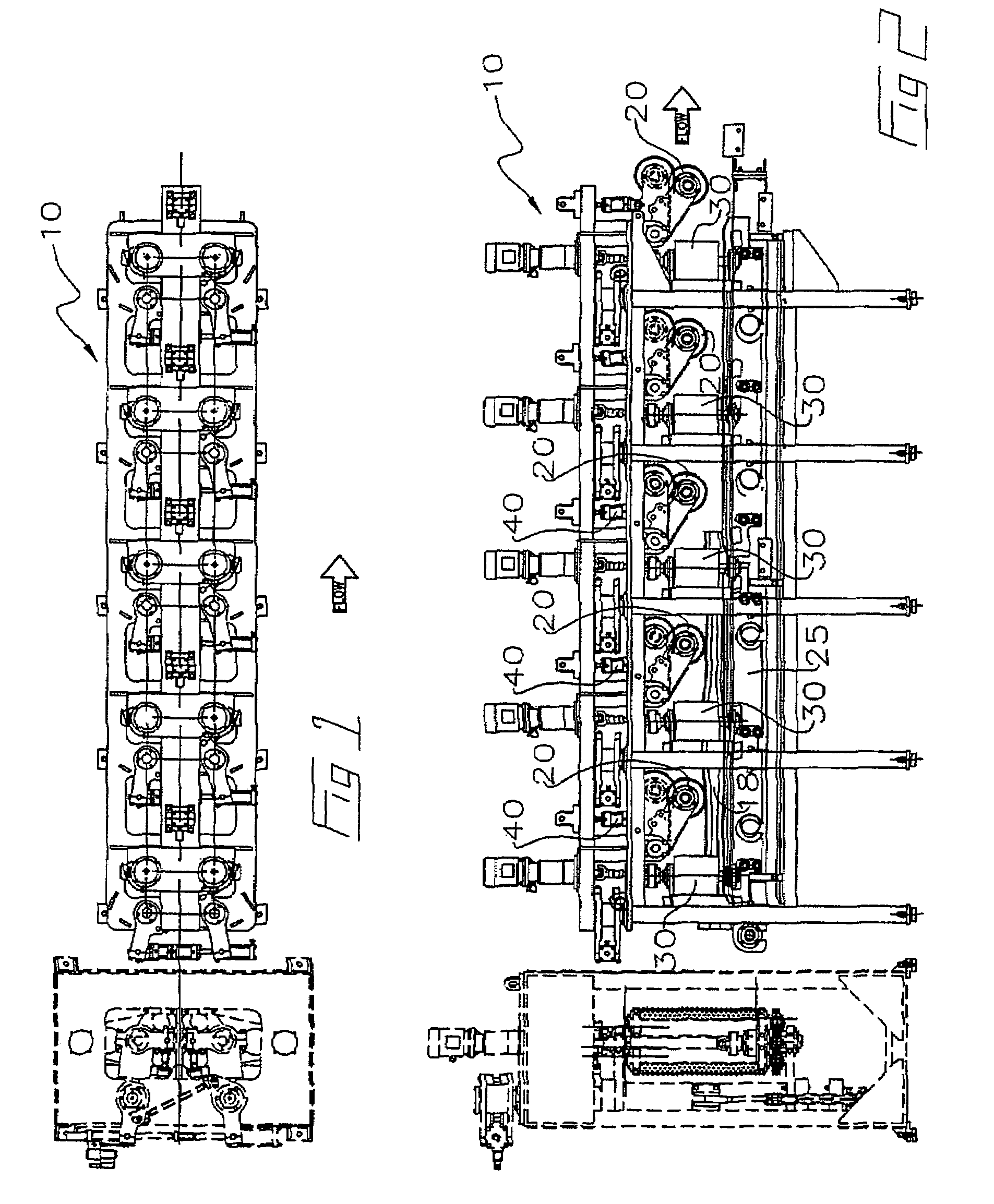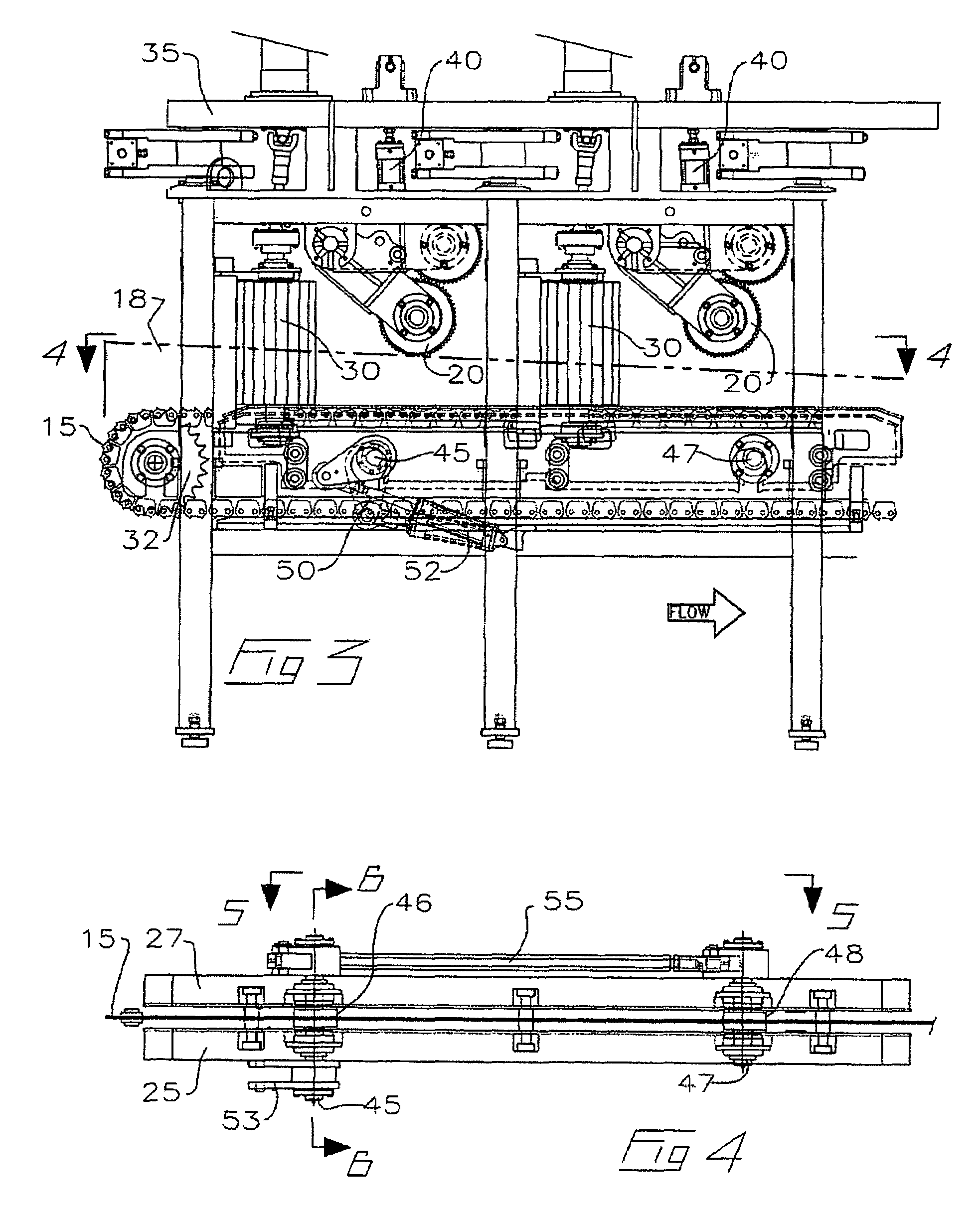Conveyor system
a conveyor system and workpiece technology, applied in mechanical conveyors, packaging, manufacturing tools, etc., can solve the problems of no means for repositioning the workpiece, significantly reducing the recovery of lumber, and slow and time-consuming manual rotation of the workpi
- Summary
- Abstract
- Description
- Claims
- Application Information
AI Technical Summary
Benefits of technology
Problems solved by technology
Method used
Image
Examples
Embodiment Construction
[0030]With reference to FIGS. 1 to 9, wherein similar characters of reference denote corresponding parts in each view, the sharp chain conveyor system 10 according to the present invention includes a conveyor such as sharp chain 15 which engages the surface of a workpiece 18. A first and a second skid 25 and 27 mounted to conveyor system 10 are configured to raise and lower workpiece 18 relative to sharp chain 15. A plurality of rotatable positioning drive rolls 30 mounted on a frame 35 rotates workpiece 18 into an optimized position.
[0031]Preferably, sharp chain 15 is a continuous steel chain. Teeth on sharp chain 15 enable sharp chain 15 to secure and engage workpiece 18 for transporting workpiece 18 along conveyor system 10 towards a primary breakdown machine, such as a headsaw (not shown). Sharp chain 15 may be mounted in one embodiment at one end on a drive sprocket 32, which is driven by suitable means known in the art to transport a workpiece 18 along conveyor system 10. The ...
PUM
 Login to View More
Login to View More Abstract
Description
Claims
Application Information
 Login to View More
Login to View More - R&D
- Intellectual Property
- Life Sciences
- Materials
- Tech Scout
- Unparalleled Data Quality
- Higher Quality Content
- 60% Fewer Hallucinations
Browse by: Latest US Patents, China's latest patents, Technical Efficacy Thesaurus, Application Domain, Technology Topic, Popular Technical Reports.
© 2025 PatSnap. All rights reserved.Legal|Privacy policy|Modern Slavery Act Transparency Statement|Sitemap|About US| Contact US: help@patsnap.com



